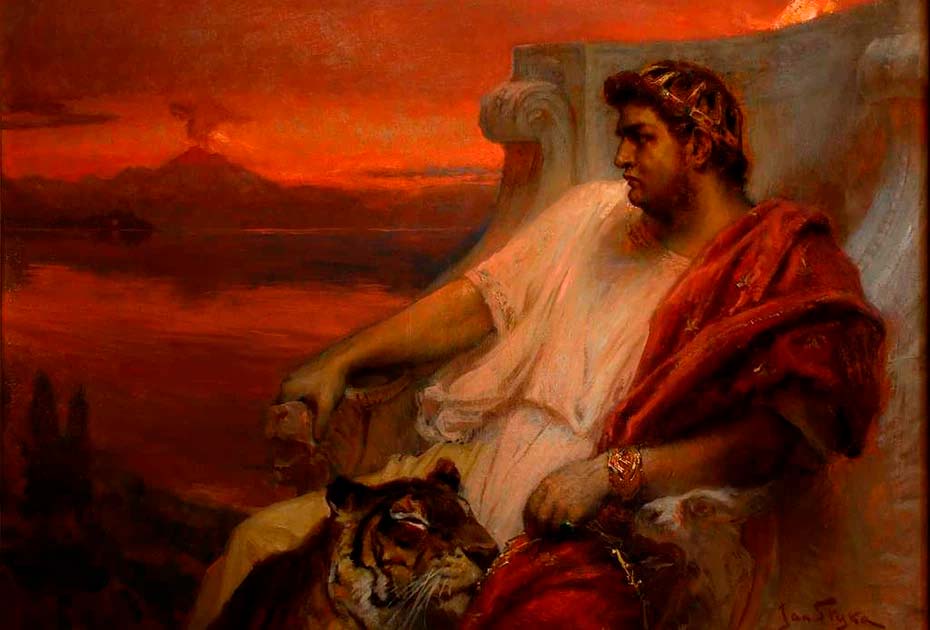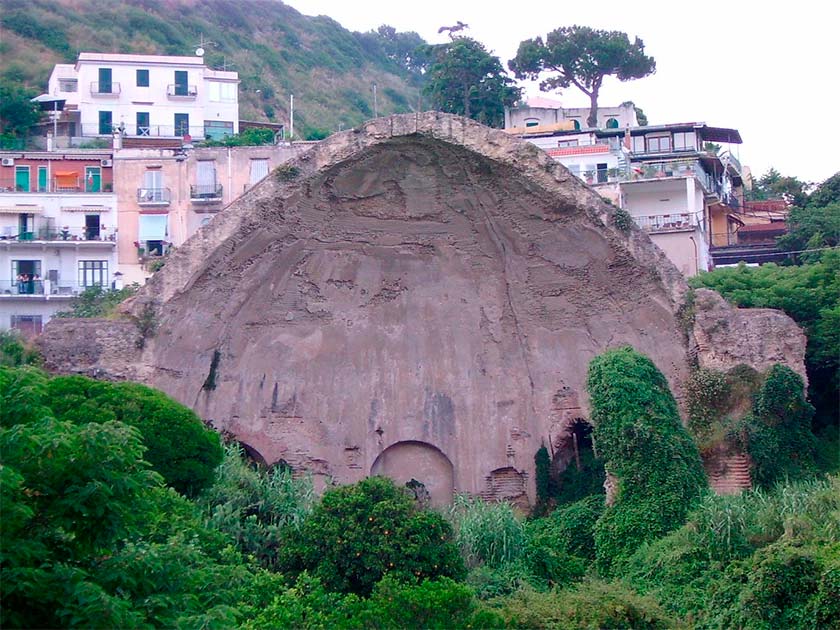The city of Baiae was an ancient Roman town found on the Northwest shore of the Gulf of Naples. It was a fashionable holiday resort for Romans of antiquity and was especially popular during the final years of the Roman Republic around the year 27 BC.
It was reckoned to be far superior to Capri, Pompeii, and Herculaneum all of which had been popular with the Roman elite for many years. Many of the villas found their date from around 100 BC to 500 AD.
Unfortunately, much of the lower part of the town was submerged because of volcanic activity that caused the collapse of much of the surrounding area of coastland. Recent archaeological surveys have revealed many of the fine buildings that still exist under the sea. However, why was this city lost and how did it come to be one of the most popular holiday resorts for wealthy Romans?
Baiae’s Name and History
The origin of the town’s name can reveal a lot about the history of this town and how the contemporary citizens thought of it. It is supposed that the town was named after the helmsman of Odysseus’s ship in Homer’s Odyssey.
The Odyssey told of the famous hero Odysseus making his way home from the Trojan War. Baius, the helmsman, is supposed to have died in Sicily when they were camped there. The Baian Gulf, next to Baiae, is named after the town. It has also been known as the Cumaean Waters but only on rare occasions.
The town was built on an active volcanic area known as the Phlegraean Fields located in the Cumaean Peninsula. It has been suggested that the town was initially built as a port for Cumrae.
Much of Baiae’s history is centered around when it became a fashionable destination for Roman elites. Pompey, Lucullus, and Marius all frequented the town whilst Julius Caesar had a villa there.
- Roman Concrete: Volcanic Material Created An Empire
- Heracleion – Discovery of the Ancient Sunken Egyptian City
Under the rule of Augustus, the town was brought under closer imperial control. Nero had a magnificent villa constructed there in the middle of the first century, whilst Hadrian died in his villa at Baiae in 138. Due to the clear imperial links, Suetonius, the imperial historian, claims that the cloak, gold bulla (amulet), and brooch given to the emperor Tiberius were on display there around 120AD.

Suetonius again provides a source of information about Baiae as the location of an eccentric stunt by the demented emperor Caligula as he attempted to ride a horse across the gulf. Caligula ordered the construction of a 3-mile-long pontoon bridge made from ships lashed together purely so that he could ride across it.
This was, surprisingly, a success, although undoubtedly also a massive waste of time and resources. It is a story that was passed down as late as the 18th century as those in the town claimed to have pieces of this bridge in storage, as proof of this idiotic scheme.
Baiae became notorious for the hedonistic lifestyle of its guests and residents. In 56 BC, Clodia, a prominent socialite, was condemned in trial for living the life of a harlot and indulging in beach parties as well as long drinking sessions.
Sextus Propertius described the town as a den of vice and licentiousness. Seneca the Younger described Baiae and vice as one and the same. He continued by saying it was a harbor of vice and a vortex of luxury where girls went to play at being girls as did the old women and men.
Though the town never gained municipal status, it remained under the administration of Cumae, it did by 36 BC including the Portus Julius which acted as the base of the western fleet for the Roman Navy. It remained a center of Roman tourism for hundreds of years, but it was not to last.
Baiae’s Downfall
The good times could only last for so long and it is recorded that, following a period of seismic activity in the 3rd century AD, the ground had begun to sink into the sea. This continued for the next 300 years as more and more of the town was eaten up by the ever-present rising waters.
It was not helped by the fact that the Roman Empire in the West collapsed in the 4th century AD and the town of Baiae itself faced many attacks. One of the most vicious was the barbarian invasions in the 8th century which saw the remaining part of the town sacked.
- Neapolis: Secrets of the Lost City of the Romans
- Salt on an Industrial Scale! Southern Belize and the Mayan Salt Farms
By 1500, Baiae was almost completely deserted after numerous sackings and increasing problems with malaria. Many of the treasures of the town were lost to the sea if they were not stolen by invaders. Fortunately, not everything was taken, and some treasures of this hedonistic lost city can be seen today.
All is not lost, however. Many of the impressive buildings from the early Roman Republic can be seen after they were excavated in 1941. Layers of buildings, villas, and bath complexes have been found.

More recent underwater archaeological surveys have discovered more buildings that have been preserved and protected by the local archaeological park authorities. Some of the most significant finds have included dome structures such as the Temples of Mercury, Venus, and Diana.
However, it has been speculated that these were actually part of the thermal baths and not temples in their own right. If true, this would be a testament to the importance of the baths in Baiae, an ancient spa town indeed.
The dome of the temple of Diana is partially collapsed but the fabulous marble friezes were still visible. They depicted hunting scenes in the marble. The temple of Mercury had a much larger dome of around 70 feet (21 m) and is suspected to have been the largest in the world before the building of Rome’s pantheon in 128 AD.
It was used as a cold pool for the public baths known as the frigidarium. Meanwhile, the temple of Venus was octagonal in shape and sunken ten feet (3 m) into the ground. It had eight large windows with arches and a balcony inside that overlooked the pool.
These pools were likely filled with warm mineral waters taken from the underground hot springs nearby. Roman engineers constructed a vast series of underground channels and chambers to heat the pools with spring water. They hoped that these hot springs would heal any illnesses which again explains why Baiae was popular with the Roman elite.
Top Image: Emperor Claudius’s sunken “nymphaeum” at Baiae. Source: Ruthven / Public Domain.
By Kurt Readman